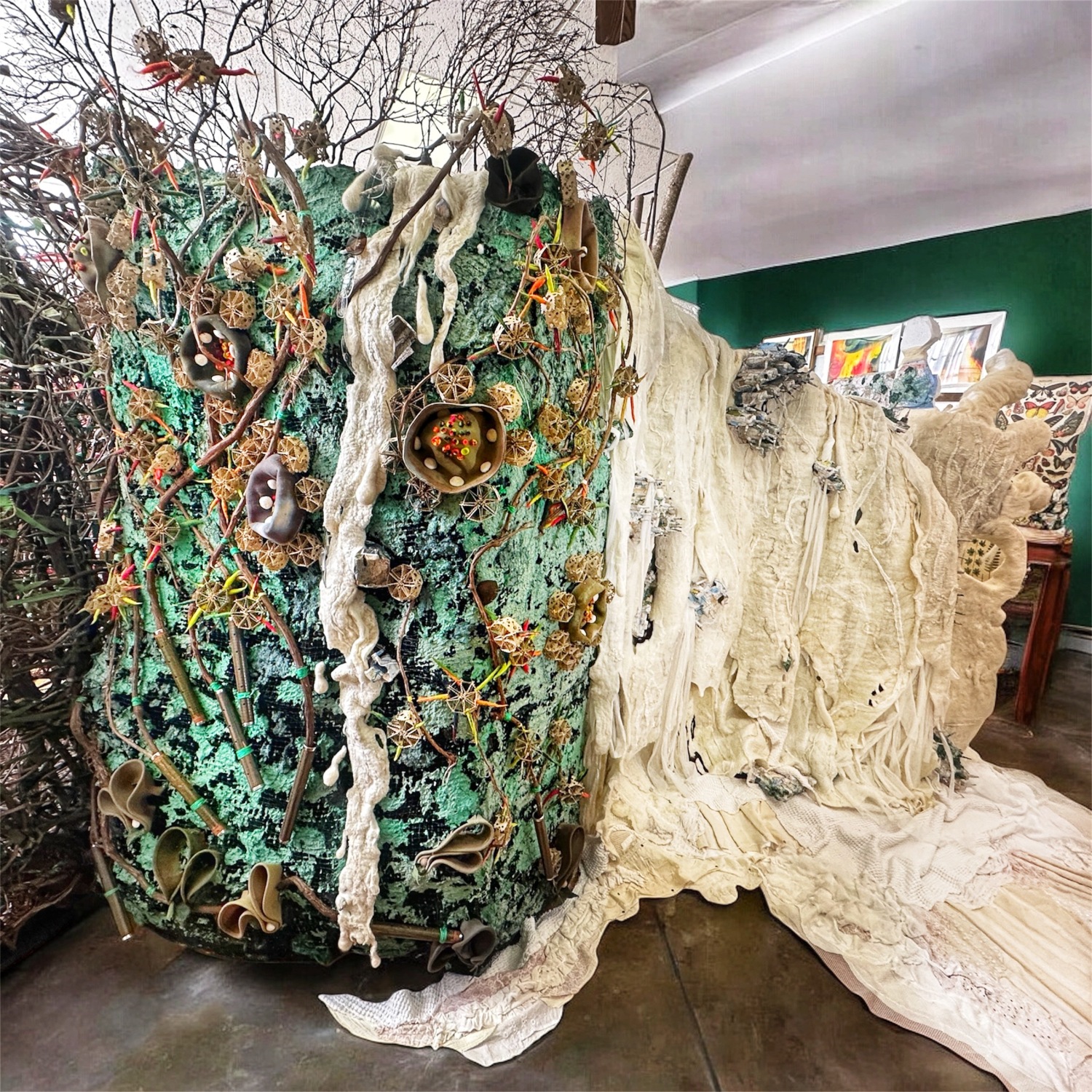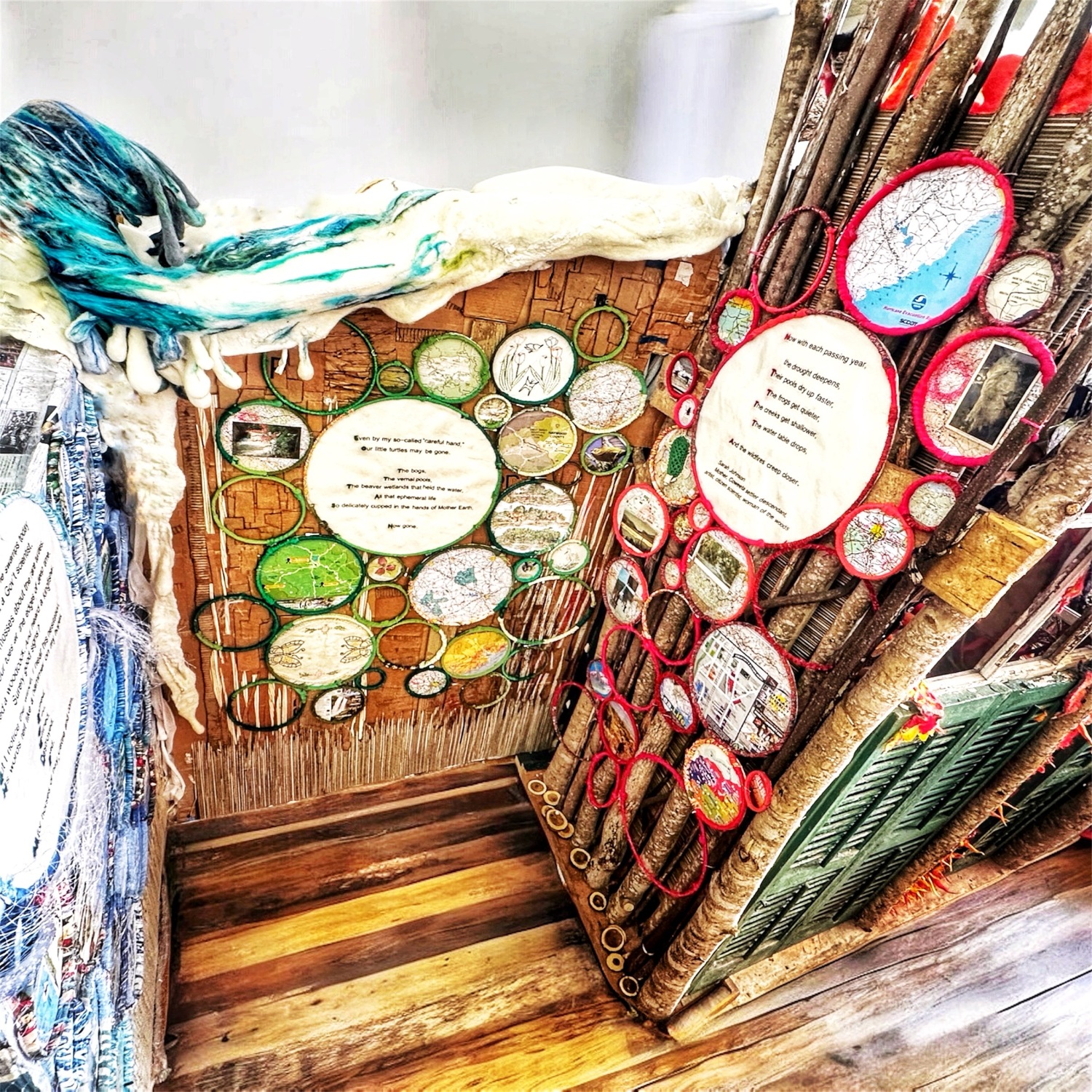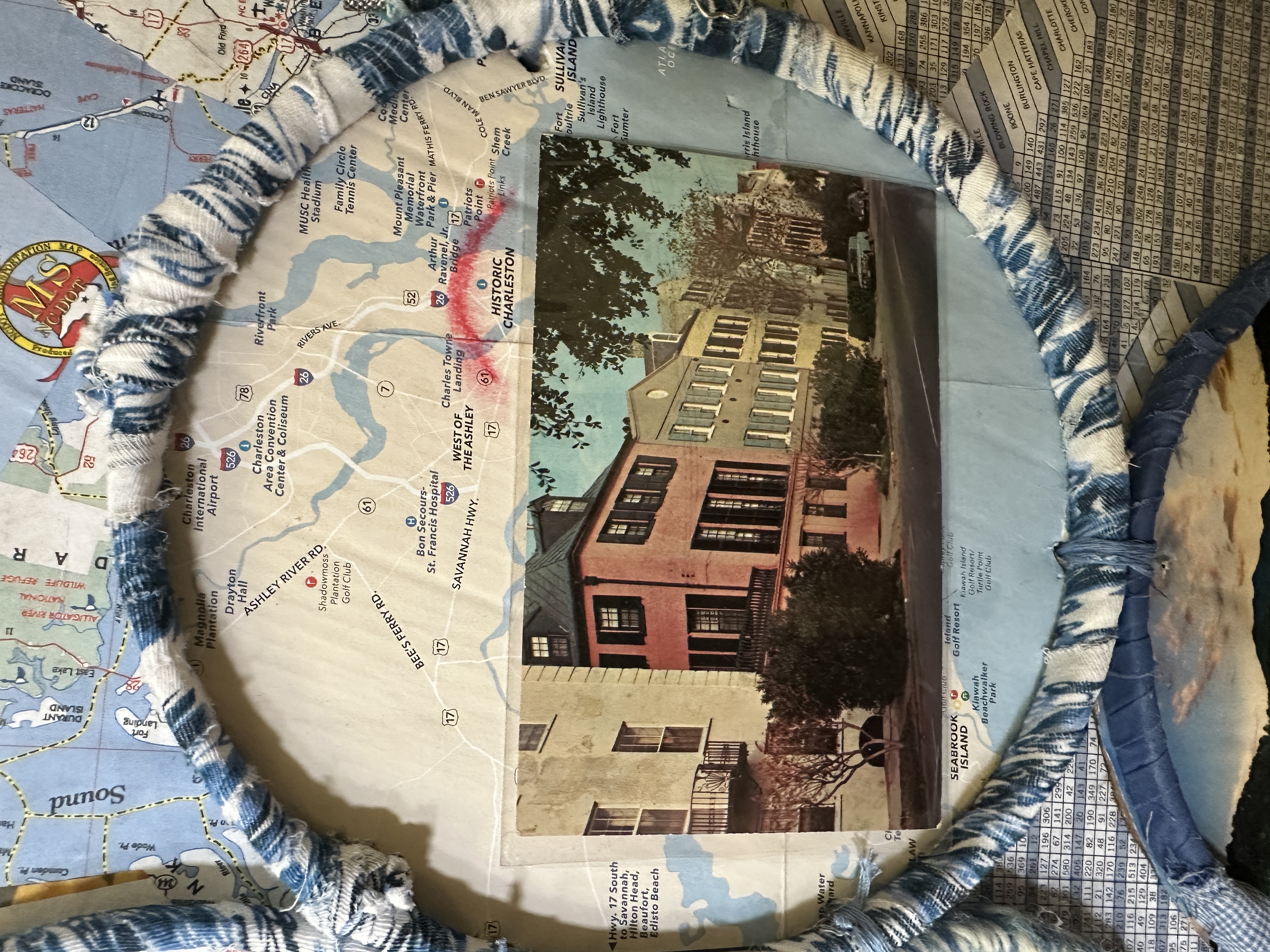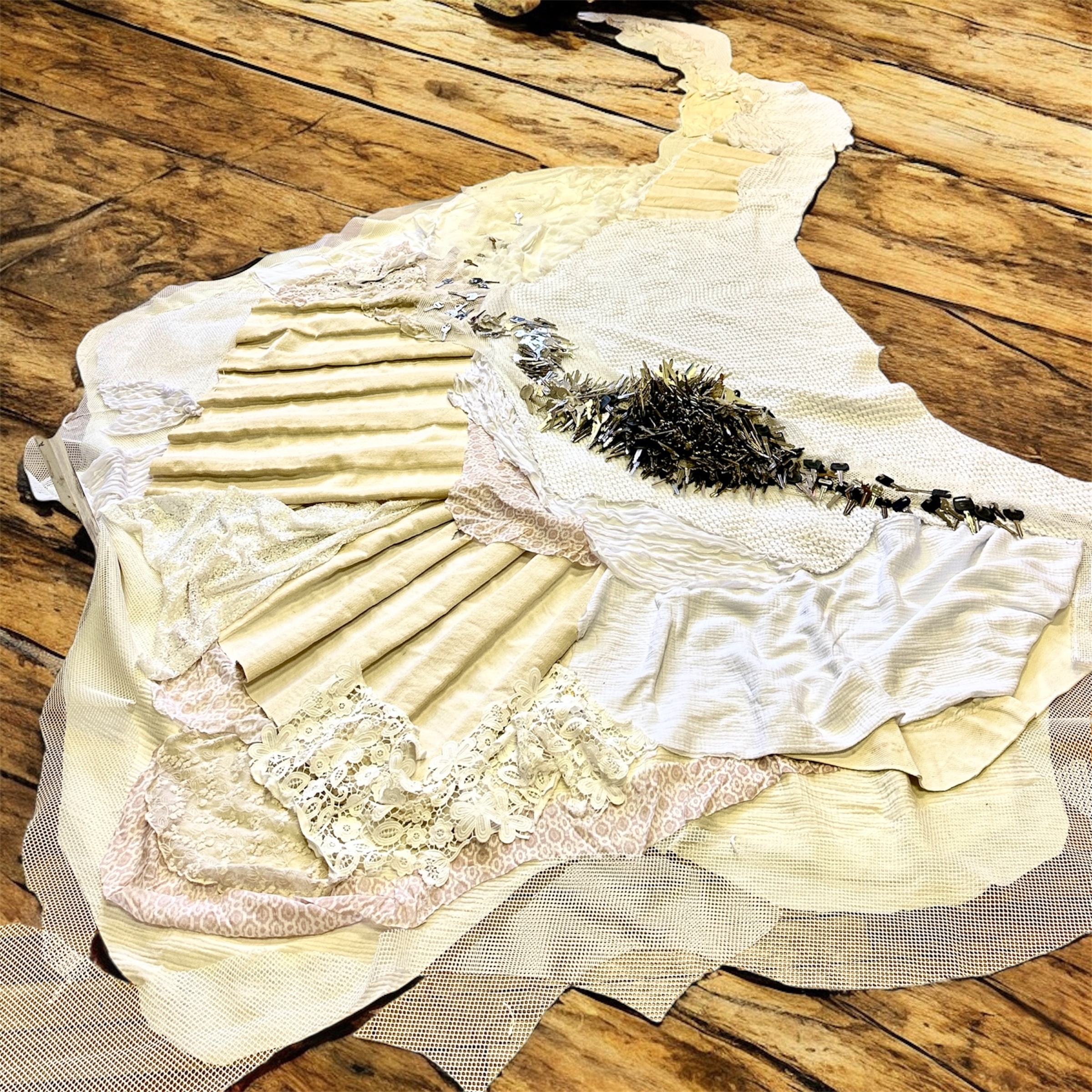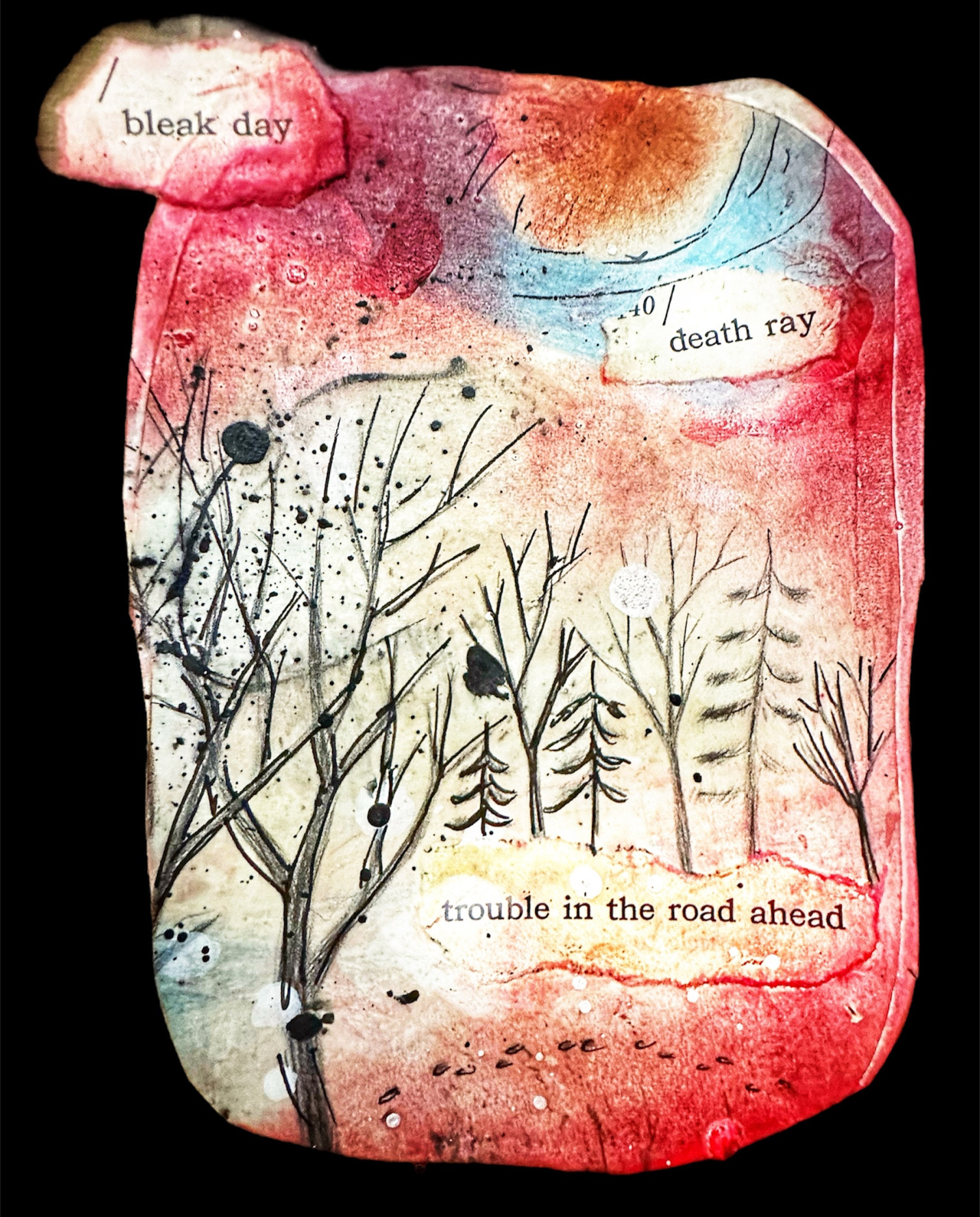Climate Project
Save the date: Immersive art installation exploring the climate crisis debuts at Rabun Gap-Nacoochee February 5, 2026
“Cat. 6? Possibilities and Consequences” invites visitors to explore the profound effects of the global climate crisis on the region’s natural resources—while holding a mirror to humanity’s role in these unfolding changes. It is the first large-scale installation produced by a neighboring cultural venue, the Cowee School Arts and Heritage Center, located in Franklin, North Carolina. The installation will be exhibited in the Rabun Gap-Nacoochee School's Arts & Technology Building.
The opening reception will be held from 4-7 p.m. on Thursday, February 5, 2026.
“Rabun Gap-Nacoochee School is dedicated to offering an elite arts education to our students and to supporting high-level arts experiences for our campus and neighboring towns,” said Brooke Smith, art and humanities teacher and exhibition curator. “We are excited to begin 2026 by presenting ‘Cat. 6? Possibilities and Consequences,’ featuring artists from the Cowee Arts and Heritage Center, a vital resource in our Appalachian region.”
The exhibition includes a 30-foot, in-the-round sculpture constructed with salvaged, foraged, industrial waste fiber materials and post-consumer plastics. It is accompanied by an original sound experience. Cat. 6 was created by Cowee resident artist Kim Keelor, with support from others including a master potter, an indigenous engraver, a poet, a naturalist and two professional composers. Additionally, the exhibition features wall-hanging environmental art by six western North Carolina artists impacted by the devastation of Hurricane Helen.
The opening event is free and open to the public, with convenient parking nearby.
*Now booking exhibitions for 2026 & 2027. Contact [email protected]
"Cat. 6? Possibilities and Consequences"

WHAT IS IT?
Cat. 6? Possibilities and Consequences examines the impacts of the global climate crisis on natural resources in North and South Carolina and underscores humankind as the cause. It is a 30-foot long, in-the-round, installation created from salvaged, foraged, and industrial waste materials. The project is led by me, Kim Keelor, a resident artist at the Cowee School Arts and Heritage Center, and includes contributions from local community members including Sarah Johnson, a naturalist-poet; Nancy Pheasant, an indigenous engraver; George Taylor, a potter; Jesse Shafer and Fisher Wilson, professional musicians from South Carolina; Dallas Shelp, a woodworker and other community artists and volunteers.
WHAT DOES IT INCLUDE?
It is 30-feet long, 9-feet high and 10-feet deep. It consists of five phases: River Nest, Dream State, Unwalled, Hard Lessons, and Seething Planet. Together, the phases devolve from the healthy environmental condition of a river nest to a hopeful, though transformed, verdant landscape, to worst-case scenarios.
Visitors can begin by entering River Nest, a structure woven from foraged grape, willow, and kudzu vines. Inside they can peek into Seething Planet before exiting to wind around the verdant Dream State mountainside and fiber waterfall. The waterfall transitions into a textile stream, and then into Unwalled, which is a 7-foot tall felt-sculpted splash representing the previously unprecedented climate-driven floods. After Unwalled, visitors move to the Hard Lessons nook with textile information bubbles about the positive and negative conditions in our current natural world. They will conclude by fully facing Seething Planet, an examination of humanity's contributions to the crisis and the existing consequences, depicted using Louise Nevelson-style relic boxes leading to a blazing forest fire. Each phase of Cat. 6? has an accompanying sound experience, created by Shafer and Wilson, who commissioned for the project. (Scroll down for photos).
The result of the two-year effort is a tactile reminder of both the fragility and potential resilience of our environment. Cat. 6? Possibilities and Consequences is a call to action, a communal reflection, and a powerful reminder of how the choices being made now will shape the Carolinas and the world for future generations.
The installation’s 2026 debut exhibition will run from mid-January through March in the galleries of the Rabun Gap-Nacoochee School which is between Franklin and Clayton, Georgia. There will be an opening reception and numerous opportunities for public viewing. Art students there will assist with the installation process and learn about environmental art in workshops led by Keelor. There, the central sculpture will be surrounded by climate-centric wall-hanging work from western North Carolina artists who appeared in the Cowee School Arts and Heritage Center’s juried “Fragments of Hope” exhibition in early 2025 and will travel as part of the “Cat. 6?” project. Additional exhibition locations are being considered for 2026 and 2027.
WHEN DID IT BEGIN AND WHY?
The installation started with the collection of materials in late 2023. It was finished in the fall of 2025 and will exhibited in 2026 - 2027.
Cat. 6? supports a greater understanding of and belief in the need for climate action immediately, and by all. It expresses the possibilities and consequences of climate-related decisions being in the Carolinas and around the world by industry, government, communities, and individuals during what scientists consider the final decade when improvements can still have a substantial impact on reversing the building calamity.
The project stems from my observations working and living in a coastal area, and now in a national forest where my new well went dry after moving in due to drought. In western North Carolina raging waterfalls can dwindle to trickles and wild fires are common. It is a region devastated by Hurricane Helene’s flooding, during a season when hurricanes were almost upgraded to Category 6 velocity for the first time in history. Before Helene, North Carolina spent more on recovery from natural disasters than 47 other states in a ten-year period according to a 2022 federal Environmental Impact Statement. Additionally, the Commissioner for the North Carolina Department of Agriculture and Consumer Services told the legislature in early 2025 that the state was No. 1 in the nation for wildfire risk. While I was living Charleston, South Carolina, my family evacuated eight times due to hurricanes. I helped launch a center for climate studies for a college while working on a coastal campus that was frequently made inaccessible by sunny-day flooding caused by sea-level rise. Additionally, a sizable portion of the undergraduate population there, polled informally by professors in 2018, stated that they either did not believe in climate change or did not think it would affect them within their lifetimes.
MATERIALS AND PROCESSES?
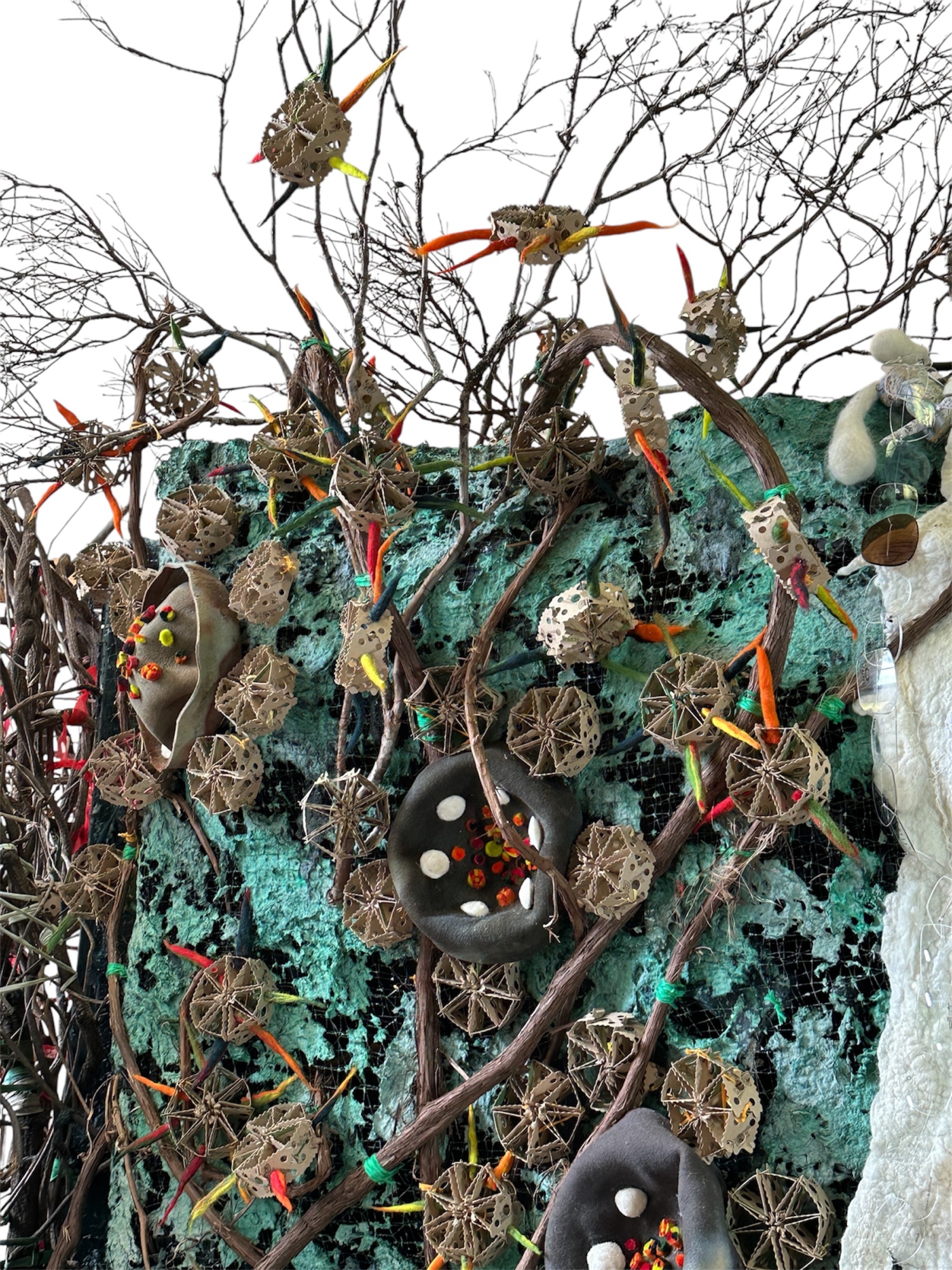
The processes and materials are listed, phase by phase, below on this page. Examples include felt making, textile deconstruction, hand building clay, hand stitching and lashing, machine sewing, collage, paper pulp making, sculpture and weaving. Approximately 85 percent of the materials were foraged, found, salvaged or donated. Examples include big box store plastic plant trays; industrial waste merino wool from a South Carolina textile mill; donated non-recyclable eyeglass blanks; expired NCDOT road maps; and post-consumer plastic.
WHERE CAN I LEARN MORE?
Work in progress videos, micro-view photographs and related resources can be found on the project-specific Instagram profile, @getitright_planet. Additional photos are below. Contact us by emailing [email protected] for more information.
THANK YOU TO THE FOLLOWING ORGANIZATIONS PROVIDING SUPPORT OR MATERIALS:
North Carolina Arts Council - grant 1,000
Kentwool (wool waste products)
North Carolina Department of Transportation (expired road maps)
Asheville Eye - Sylva and Franklin (non-recyclable eyeglass lenses)
Franklin Press (leftover blank newspaper print)
Blue Ridge Bartram Trail Conservancy (packing materials)
THANK YOU TO COMMUNITY ARTISTS AND VOLUNTEERS
Top volunteer contributors of time and talent:
Sarah Johnson - naturalist, poet, mother, farmer Coweeta pioneer descendant
Nancy Pheasant - indigenous multi-media artist; Cherokee syllabary adviser and potter A partial view of the Dream State phase of Cat. 6
Bill Richardson - Cowee community volunteer, kudzu guru
Dallas Shelp - wood worker and construction adviser
George Taylor - potter/instructor, Cowee Pottery School
Serial volunteers:
Carol Conti (artist/adviser)
Barbara Gaglliardo
Darlene Keelor
Stacy Keelor
Lee McMillan (local artist)
Artists and volunteers helping for an hour or more during two community days:
Highlands Biological Station Students/Western Carolina University
Wendy Antonio (artist)
Ben Banick (luthier, musician, wood worker, naturalist)
Teresa Bouchenet (Artist in Residence/rock weaver)
Laura Brooks (Ex. Dir. Cowee Arts & Heritage Center)
Jean Hunnicutt (artist)
Jennifer Hock (artist)
Angela Martin (Artist in Residence/naturalist/singer-songwriter/owner Alarka Expeditions)
Brent Martin (Artist in Residence/naturalist/writer/Exec. Dir. Blue Ridge Bartram Train Conservancy)
Ashlyn Miller (Artist in Residence/holistic practitioner/ owner Inner_Woven
Amanda Panda (naturalist/writer)
Chloe Powlass
Sydney Reichert
Lois Selfon (artist)
Miriam Stipling
Madison Travis
Jenn Tuft
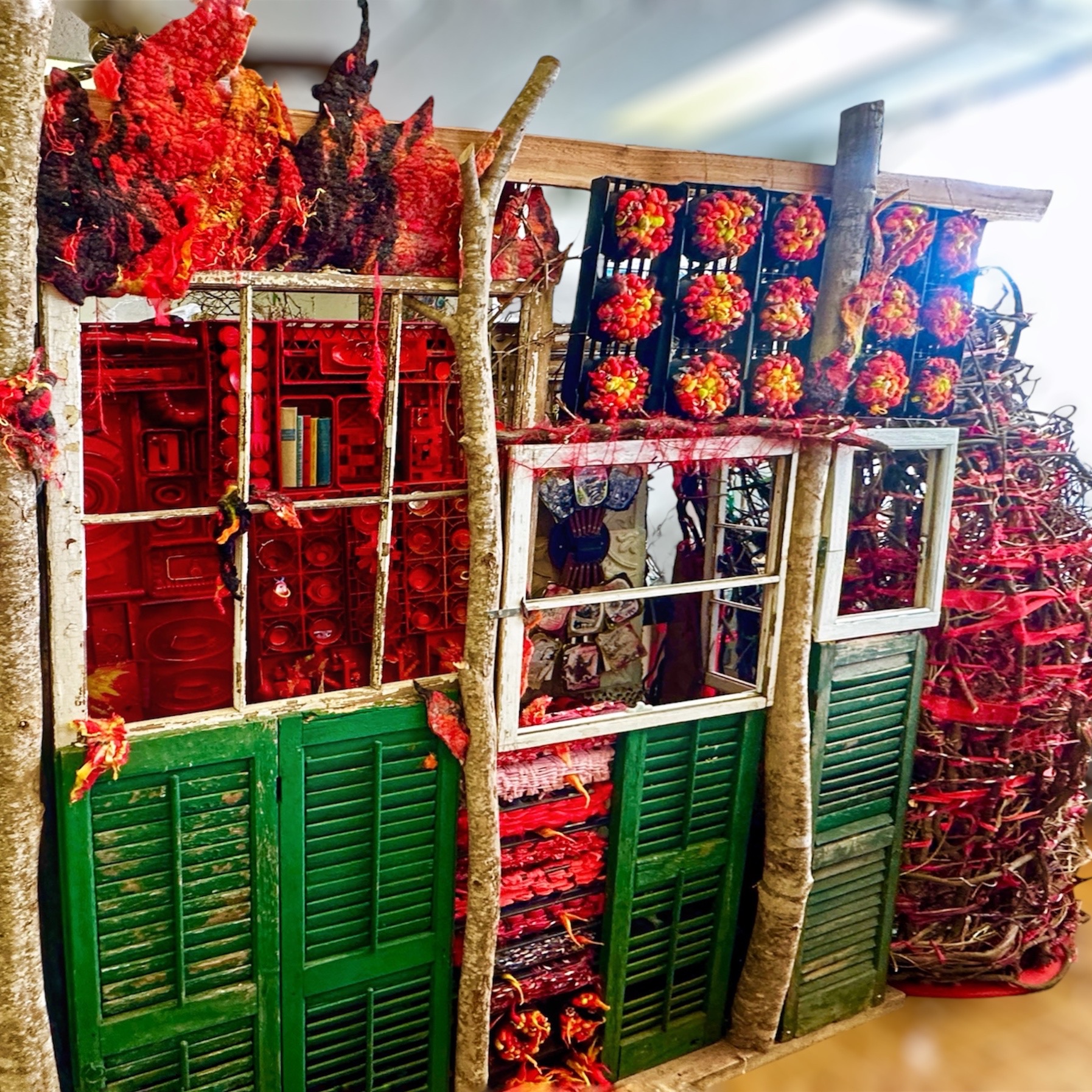
Outside view of the Seething Planet phase of Cat. 6 Possibilities and Consequences
The Dream State phase, created from close to 100% industrial waste or foraged fiber, with a post consumer plastic armature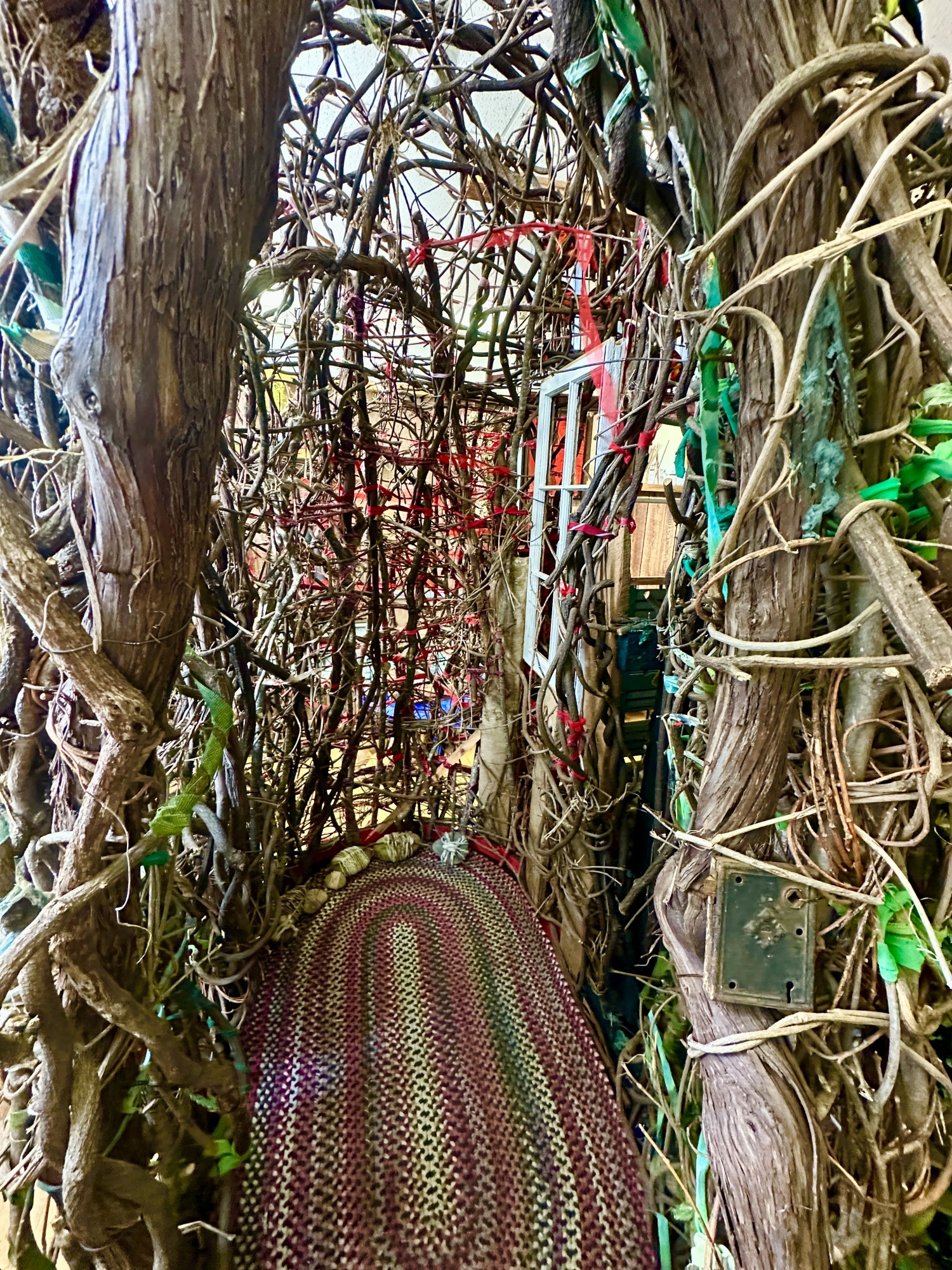
Looking into the almost 9 feet tall River Nest phase of Cat. 6? Possibilities and Consequences,
woven from foraged, found and salvaged materials.
A view from above of the Hard Lessons phase with a local naturalist's poem that underpins the narrative of Cat. 6? Possibilities and Consequences, with salvaged textile wrapped information bubbles about the climate impact status of areas and animals in the Carolinas, with a large fiber wave on the top that is coming from the Dream State waterfall on the other side of the structure
The view from inside River Nest, looking onto a fiber forest fire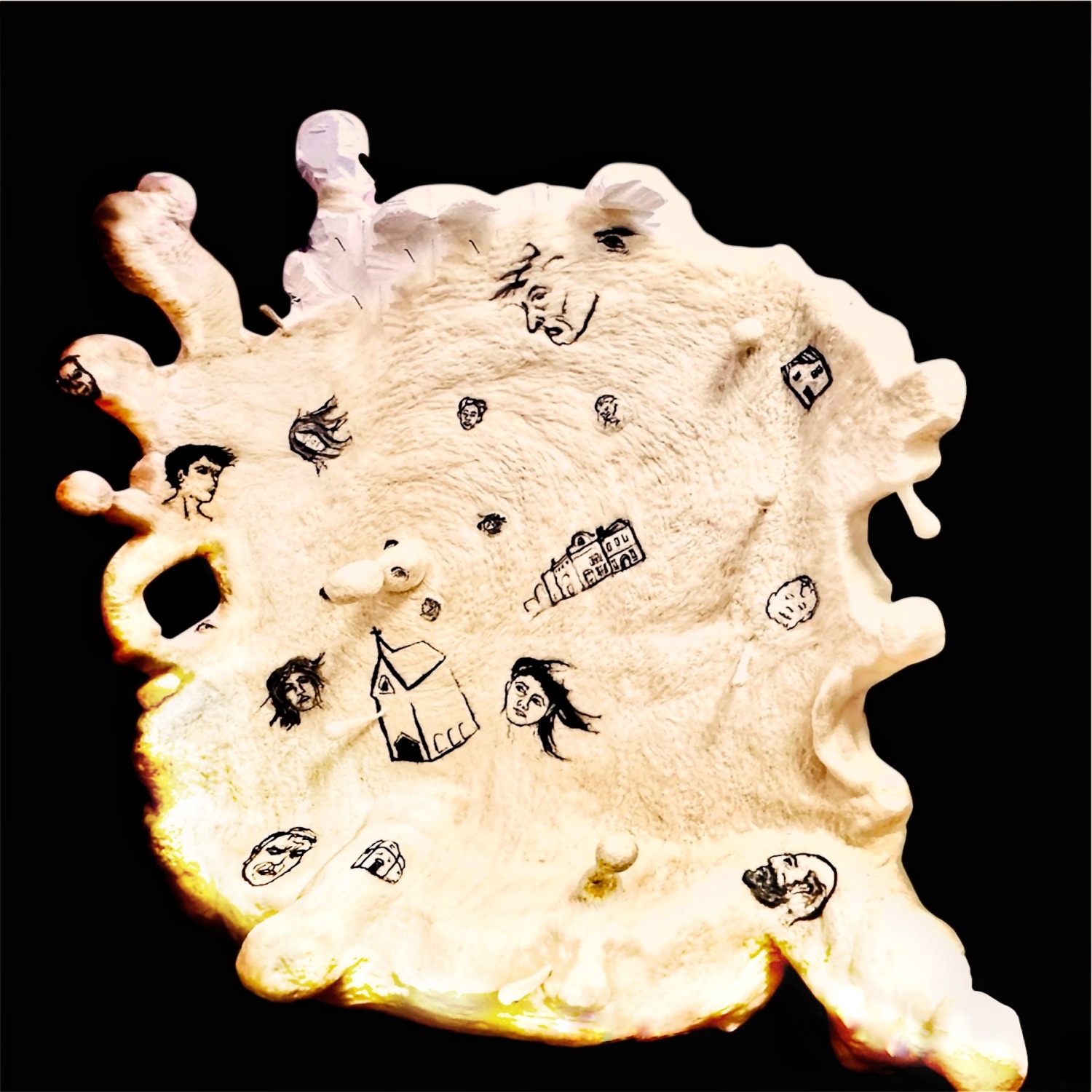
This is the Unwalled phase, not quite finished and taken under the restrictions of Keelor's studio (a head-on shot was not possible at this time). It is approximately 8' x 7'. The armature was sculpted with a hot wire after combining and shaping salvaged styrofoam. The styrofoam was then needle felted with merino wool roving and industrial waste wool. It indicates a large splash, flood or hurricane with sketches of people and buildings that were lost in climate-driven disasters.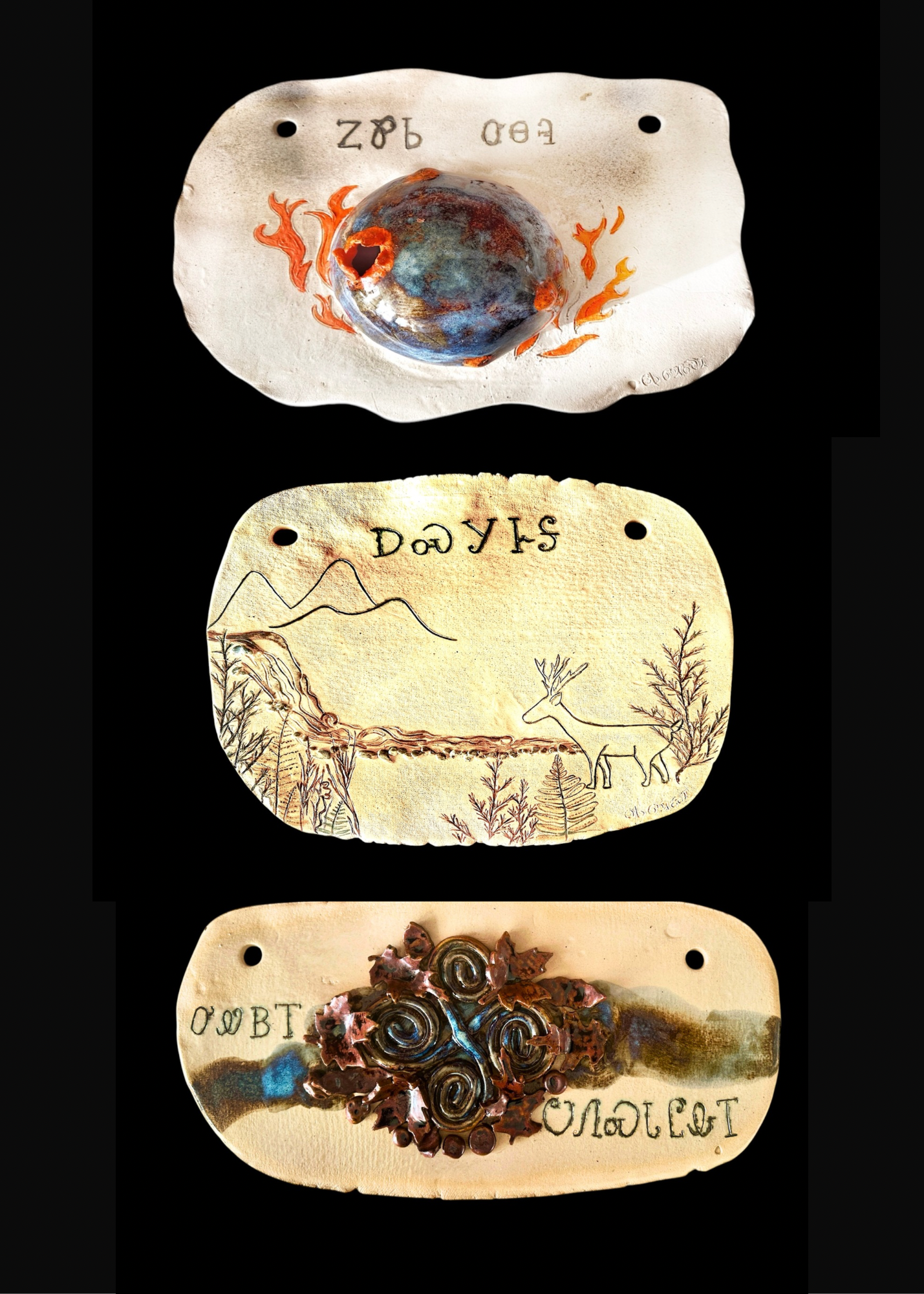
Pottery plaques that will be affixed to the Seething Planet, Dream State, and River Nest phases, created
by Nancy Pheasant and George Taylor as an interpretation of Cherokee alignment with the climate concerns. From top to bottom: Angry planet, Dreaming, River nest
A micro-view of an information bubble in the Hard Lessons phase, this one indicating the current challenges the historic area of Charleston, South Carolina is facing due to sea level rise, based on the artists experiences there.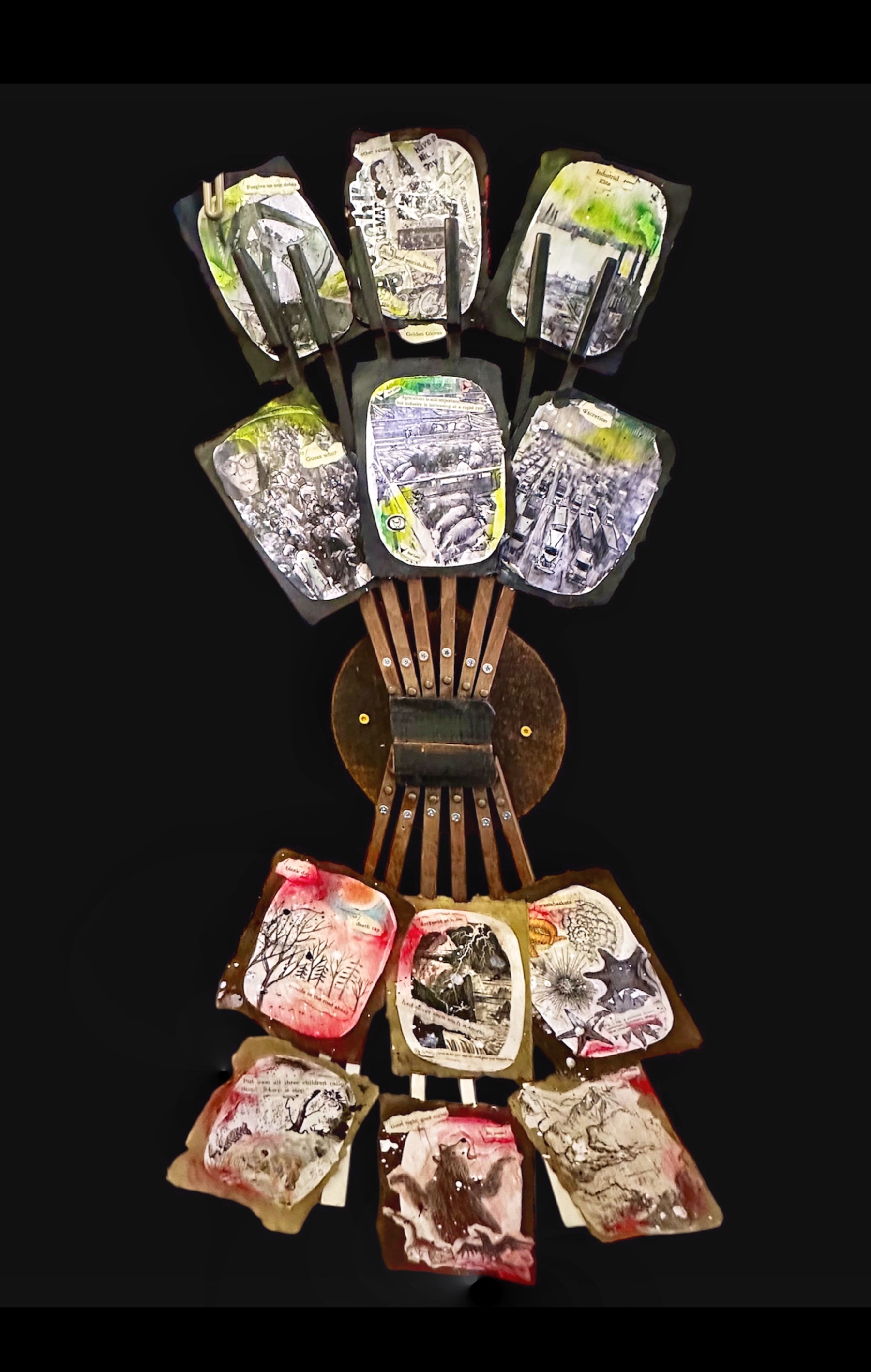
A salvaged piano key assemblage and collage element within the Seething Planet phase,
demonstrating the causes and consequences of the climate emergency
The deconstructed textile and salvaged keys floor flood that connects the Dream State Phase with the Unwalled phase of the
Cat. 6? Possibilities and Consequences climate emergency installation
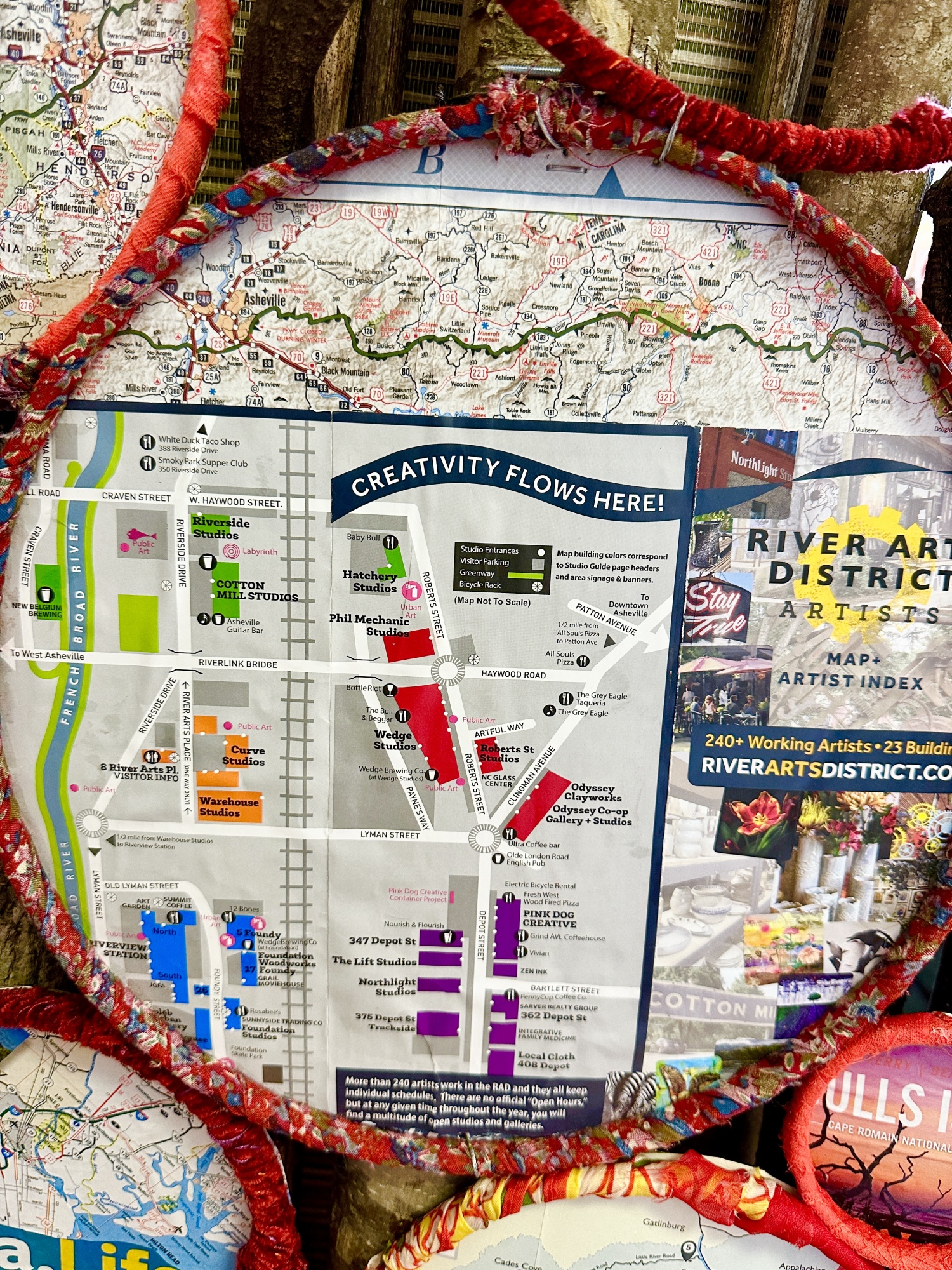
A micro-view of one of the information bubbles in the Hard Lessons phase of Cat. 6? Possibilities and Consequences. The red side of this phase presents areas in the Carolinas already heavily impacted by the global climate emergency, or at great risk.
A micro-view of one of the collage panels comprising the causes and consequences sculpture that is within the Seething Planet phase.
NOTE: These photos were taken under the constraints of Keelor's studio, prior to the first public exhibition.
AI was used on some of them to eliminate studio background clutter in order to better define the subjects
